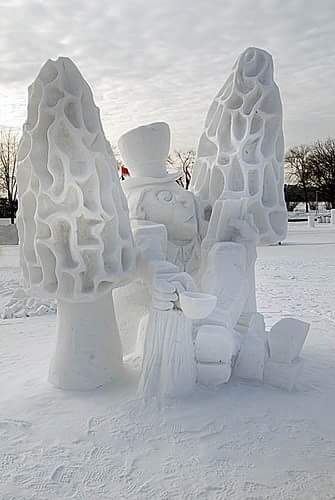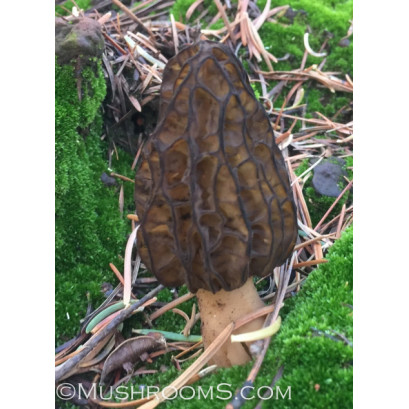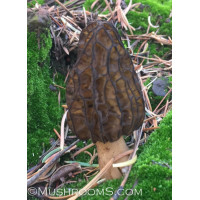Morels are one of the most sought after mushrooms anywhere. They have a bold meat taste that is exquisite and satisfying and they dehydrate and hold there flavor for many years. They are also an easy mushroom to identify, but also difficult to find. The exception to this is fire morels. Morels that follow forest fires and controlled burns are usually in abundance. Morels typically fruit in the spring but will also fruit in the fall for several years after a forest fire.
Morel mushrooms are difficult to grow indoors, although Paul Stamets and others have had limited success with black morels. Black morels are the easier of the morels to grow indoors. Outdoor habitats are far easier and are usually successful. Morel mushrooms do not grow in tropical areas, they prefer seasonal changes and especially cold wet or snowy winters to fruit well in the spring.
Morels do not need a living tree host, they can be grown on wood chips. We are currently selling spores from "fire morels" that is an abundant fruiting strain identified as Morchella Sextelata.
The variety of morels we sell is best suited for outdoor cultivation and is a high yielding strain. The fall day we found these there was thousands of morel mushrooms fruiting in a 1/4 mile area. They were fruiting among partially burnt spruce and fir trees. Spruce and fir make an excellent choice of wood chips for a morel habitat. Instead of putting that Christmas tree in the trash, consider chopping it up and growing morels on the wood chips. :)
A suggestion for growing morels is putting fresh wood ash in the substrate as well. Morel spores germinate quickly and their mycelia spreads fast. The mycelium is brown and can easily be mistake for contamination. See our photo of morel mycelium producing sclerotia on an agar plate. Morels are in a small group of mushroom fungi that produce an underground structure called a sclerotium.
The sclerotia is a nutrient storage and resting stage that allow the mycelia to survive unfavorable weather and fires. They can be completely dry then upon rehydration they swell up and either form a new mycelia network or fruit mushrooms to drop spores and continue the life cycle. Morels will naturally product sclerotia on many habitats such as straw, peat moss and sand, as they tend to be soil dwellers. One way to ensure an outdoor patch is produce the sclerotia then plant that among your habitat. Making a spore slurry from morel spores, unchlorinater water and molasses then spreading that around a wood chip patch is another sure way to get mushrooms in your yard. Here is a video of an urban family from Kansas easily producing an abundance of morels on their land using a simple spore slurry. The kids in this video are so cute, and you can see what a fun family project this is.
This same technique can be used for many outdoor wood loving mushroom patches. If you don’t have an actual mushroom with spores, you can simply scrape the spores from one or two of our spore prints or squirt the solution from liquid culture syringes into the molasses solution. If using liquid cultures be sure and give them a few days to grow more mycelium in the solution.
We would love to see any of our customers outdoor morel mushroom habitats fruiting. Please send us pictures and we will reward you with free cultures or spores.

Morel Mushroom Culture Syringe
- Product Code: MOREL
- Availability:
-
$19.50
Related Products
Morel Mushroom Spore Print
Morels are one of the most sought after mushrooms anywhere. They have a bold meat taste that is exqu..
$28.50
Tags: gourmet mushrooms, spore prints, cool weather mushrooms














